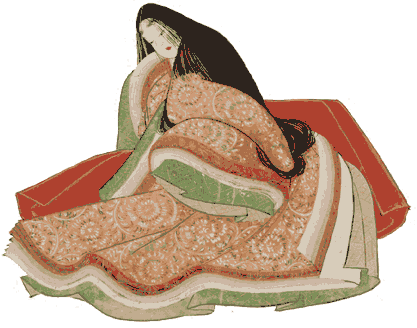 The Japanese Art Society of America (JASA) promotes the study and appreciation of Japanese art. Founded in 1973 as the Ukiyo-e Society of America by collectors of Japanese prints, JASA’s mission has expanded to include related fields of Japanese art. Through its annual lectures, seminars and other events, the Society provides a dynamic forum in which members can exchange ideas and experiences with experts about traditional and contemporary arts of Japan.
The Japanese Art Society of America (JASA) promotes the study and appreciation of Japanese art. Founded in 1973 as the Ukiyo-e Society of America by collectors of Japanese prints, JASA’s mission has expanded to include related fields of Japanese art. Through its annual lectures, seminars and other events, the Society provides a dynamic forum in which members can exchange ideas and experiences with experts about traditional and contemporary arts of Japan.
Celebrating 50 Years of JASA—and Building Our Exciting Future!
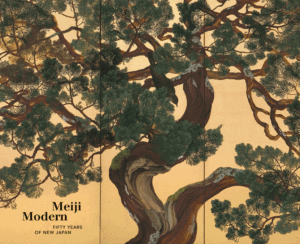
JASA’s groundbreaking 50th anniversary exhibition, Meiji Modern: Fifty Years of New Japan, took place from October 2023 to September 2024 to great acclaim, attracting thousands of visitors at venues in New York, Chicago and Houston. JASA’s beautiful 272-page full-color catalog for the exhibition (cover at left) takes a fresh look at the art of the Meiji period (1868-1912) through approximately 200 objects drawn from public and private collections across the United States, including newly discovered prints, photographs, textiles, paintings and craft objects. Copies of the catalog can be ordered through the JASA Store or our mail-in Publications Order Form.
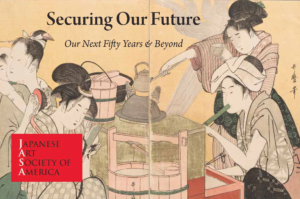 JASA has embarked on a major capital campaign. Our goal is to raise a total of $2.5 million to help secure our future as the premier membership organization in North America dedicated to the arts and culture of Japan. We have already raised a substantial portion to cover the costs of the Meiji Modern exhibition. However, we also need your help to secure additional funds to support Impressions, JASA programming and scholarship in Japanese art history Download our Securing Our Future brochure here and watch the video here to learn more about this important initiative and how you can be part of building JASA’s exciting future!
JASA has embarked on a major capital campaign. Our goal is to raise a total of $2.5 million to help secure our future as the premier membership organization in North America dedicated to the arts and culture of Japan. We have already raised a substantial portion to cover the costs of the Meiji Modern exhibition. However, we also need your help to secure additional funds to support Impressions, JASA programming and scholarship in Japanese art history Download our Securing Our Future brochure here and watch the video here to learn more about this important initiative and how you can be part of building JASA’s exciting future!
Meet JASA’s New President: Victoria Melendez
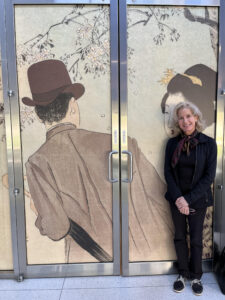
Impressions recently met with Victoria Melendez, elected the society’s president in 2024, in the galleries of the Department of Arms and Armor at the Metropolitan Museum of Art, where we had just viewed an onsite presentation of Japanese swordsmanship. While she is well-known to many JASA members and fellow collectors, we invited Victoria to share some of her background and views on collecting Japanese art.
We are delighted to speak with you about your new leadership role with JASA. Members look forward to getting to know you better and to working with you. To begin our short conversation, please tell us about your early years. Where were you born? Where did you grow up, go to school?
I was born and raised in New York City. I attended the Fiorello H. LaGuardia High School of Music & Art and Performing Arts, where I focused on painting and drawing.
Were your parents both interested Japan, or in art? What interested you as a child?
My parents were both interested in art, such as painting and ancient art, and when I was a child often took me to museums, such as the Metropolitan Museum of Art. Rather than Japan, they were more interested in Spain and Latin America, probably because my father was from Colombia and my mother was a Spanish teacher.
Read our complete conversation with Victoria Melendez here.
June JASA Event
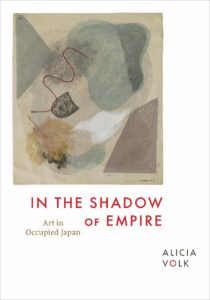
On Monday, June 9, 5 p.m. ET, join us for a live Zoom webinar with Alicia Volk, Professor of Japanese Art at the University of Maryland, who will speak about her new book, In the Shadow of Empire: Art in Occupied Japan. Her talk will show how the forgotten art of a country in the shadow of the Japanese and American empires variously accommodated and resisted the Cold War global realignment that followed on the heels of World War II. Click here to register: June 9 Webinar.
For those who missed our May 20 webinar, The Three Perfections: Japanese Poetry, Calligraphy, and Painting, presented by John T. Carpenter, Mary Griggs Burke Curator of Japanese Art at The Metropolitan Museum of Art, the video is posted below.
For details of this and upcoming events, visit our JASA-Sponsored Events
You can also find links and details for all recorded JASA events on our Lecture Videos page.
- Lecture: The Three Perfections: Japanese Poetry, Calligraphy, and Painting (John T. Carpenter) May 22, 2025The Three Perfections: Japanese Poetry, Calligraphy, and Painting (Lecture by John T. Carpenter)
On May 20, 2025, John T. Carpenter, Mary Griggs Burke Curator of Japanese Art at The Metropolitan Museum of Art, gave an overview of the themes covered in the recently published book The Three Perfections: Japanese Poetry, Calligraphy, and Painting, co-authored with Tim T. Zhang, research associate in the Department of Asian Art. This volume and the exhibition it accompanies—co-curated with Mr. Zhang and Monika Bincsik, Diane and Arthur Abbey Curator of Japanese Decorative Arts—serve to commemorate the extraordinary gift of more than 300 Japanese paintings and calligraphies to The Met from Seattle-based collectors Mary and Cheney Cowles.
The five primary areas addressed in the book include: kana calligraphy of the 11th to 14th centuries; bokuseki, or Zen monks’ calligraphies of medieval times; courtly styles of calligraphy and paintings of the early modern period; Ōbaku Zen calligraphy of the 17th century; and literati painting of the 18th and 19th centuries. By way of background, please see the in-depth interview with Cheney Cowles published in Impressions 41 (2020), “Cheney Cowles: A Seattle Collector Makes a Statement.”
- Lecture: Pictures of a Changing Japan: The Evolution of Shin Hanga (Fiona Collins-Rosedahl) April 22, 2025Pictures of a Changing Japan: The Evolution of Shin Hanga (Fiona Collins-Rosedahl)
The Worcester (Massachusetts) Art Museum has a fine collection of Japanese art, and on April 21, 2025, Fiona Collins-Rosedahl, Assistant Curator of Asian Art, discussed the museum’s print exhibition Pictures of a Changing Japan: The Evolution of Shin Hanga (on view until June 29).
Shin hanga, or “new prints,” emerged during a period of dramatic sociopolitical change in Japan as a nostalgic revival of collaborative, ukiyo-e-style woodblock printmaking. While capturing scenes of Japan’s vanishing traditional life, these artists incorporated Western-inspired techniques to create some of the most iconic Japanese prints of the 20th century.
Featuring works by masters including Kawase Hasui, Yoshida Hiroshi, Ito Shinsui, and Hashiguchi Goyo, the exhibition traces the evolution of shin hanga from its origins with publisher Watanabe Shozaburo in the 1910s, examining how Japan’s changing cultural landscape and the international reception of Japanese art shaped its development. Collins-Rosedahl explored the Worcester Art Museum’s key role in promoting shin hanga through exhibitions and programming that helped establish the genre internationally.
- Lecture: Birds, Diplomacy and Painting in 16th-Century Japan (Dr. Matthew McKelway) March 15, 2025Birds, Diplomacy and Painting in 16th-Century Japan (Dr. Matthew McKelway)
Dr. Matthew McKelway, Takeo and Itsuko Atsumi Professor of Japanese Art History, Art History and Archeology at Columbia University giving a talk on “Birds, Diplomacy and Painting in 16th-Century Japan.”
- Lecture: Meiji Kabuki: Japanese Theatre Through Foreign Eyes (Dr. Samuel Leiter) February 24, 2025Meiji Kabuki: Japanese Theatre Through Foreign Eyes (Dr. Samuel Leiter)
On February 24, 2025, Samuel Leiter, Distinguished Professor Emeritus of Theater at Brooklyn College and the Graduate Center of CUNY, spoke on his latest book, Meiji Kabuki: Japanese Theatre through Foreign Eyes. This publication is an annotated collection of English-language documents by foreigners writing about Japan’s kabuki theater in the half-century after the country was opened to the West in 1853. Using memoirs, travelogues, diaries, letters and reference books, Meiji Kabuki contains all significant writing about kabuki by foreigners—resident or transient—during the Meiji period (1868–1912), well before the first substantial non-Japanese book on the subject was published.
Meiji Kabuki provides insights into how Western visitors—missionaries, scholars, diplomats, military officers, adventurers, globetrotters and even a precocious teenage girl—responded to a theater that had been almost entirely hidden from the world at large for over two centuries. The book reveals prejudices and misunderstandings, but also demonstrates the power of great theater to bring together people of differing cultural backgrounds despite the barriers of language, artistic convention and the very practice of theater-going.
Professor Leiter has published 31 books on Japanese theater, New York theater, Shakespeare and the great stage directors. Meiji Kabuki: Japanese Theatre through Foreign Eyes (2022) was selected as a Choice Reviews Academic Book of the Year. His most recent book is Brooklyn Takes the Stage: Nineteenth-Century Theater in the City of Churches (2024). He served as editor-in-chief of Asian Theatre Journal from 1992 to 2004. Among his many books on Japanese theater are Historical Dictionary of Japanese Traditional Theatre (2014); Kabuki at the Crossroads: Years of Crisis, 1952-1965 (2013); Rising from the Flames: The Rebirth of Theatre in Occupied Japan, 1945-1952 (2009); and the four-volume Kabuki Plays on Stage.
- Lecture: Striking Objects: Contemporary Japanese Metalwork from the Shirley Z. Johnson Collection (Dr. Sol Jung) January 26, 2025Contemporary Japanese Metalwork from the Shirley Z. Johnson Collection (Lecture by Dr. Sol Jung)
Contemporary Japanese metalworking breathes life into traditional methods that have been passed down and practiced over generations. The history of Japanese metalworking evolved over two millennia, through cross-cultural exchange and internal innovation. Techniques unique to Japan flourished as metalworkers created armaments, Buddhist ornaments, and vessels used in Japanese tea practice.
In this January 20, 2025, talk, Dr. Sol Jung examines examples of contemporary Japanese metalwork currently on view in the exhibition Striking Objects: Contemporary Japanese Metalwork. The exhibition (on view until January 11, 2026) focuses on the technique of tankin (鍛金; hammering) through metalworks that came to the Smithsonian’s National Museum of Asian Art as part of the bequest of the late Shirley Z. Johnson (1940–2021), a distinguished lawyer, philanthropist, and former board member of the NMAA. Shirley Z. Johnson’s passion for contemporary Japanese metalwork and her visionary gift have made the National Museum of Asian Art home to the largest collection of such works in the United States.
Sol Jung joined the Smithsonian’s National Museum of Asian Art in 2021 as the inaugural Shirley Z. Johnson assistant curator of Japanese art. She oversees the museum’s collection of prehistoric to contemporary Japanese ceramics, lacquerware, metalwork and textiles. Jung received her B.A. with distinction in History of Art at the University of Pennsylvania, and her M.A. and Ph.D. in Art and Archaeology from Princeton University.
